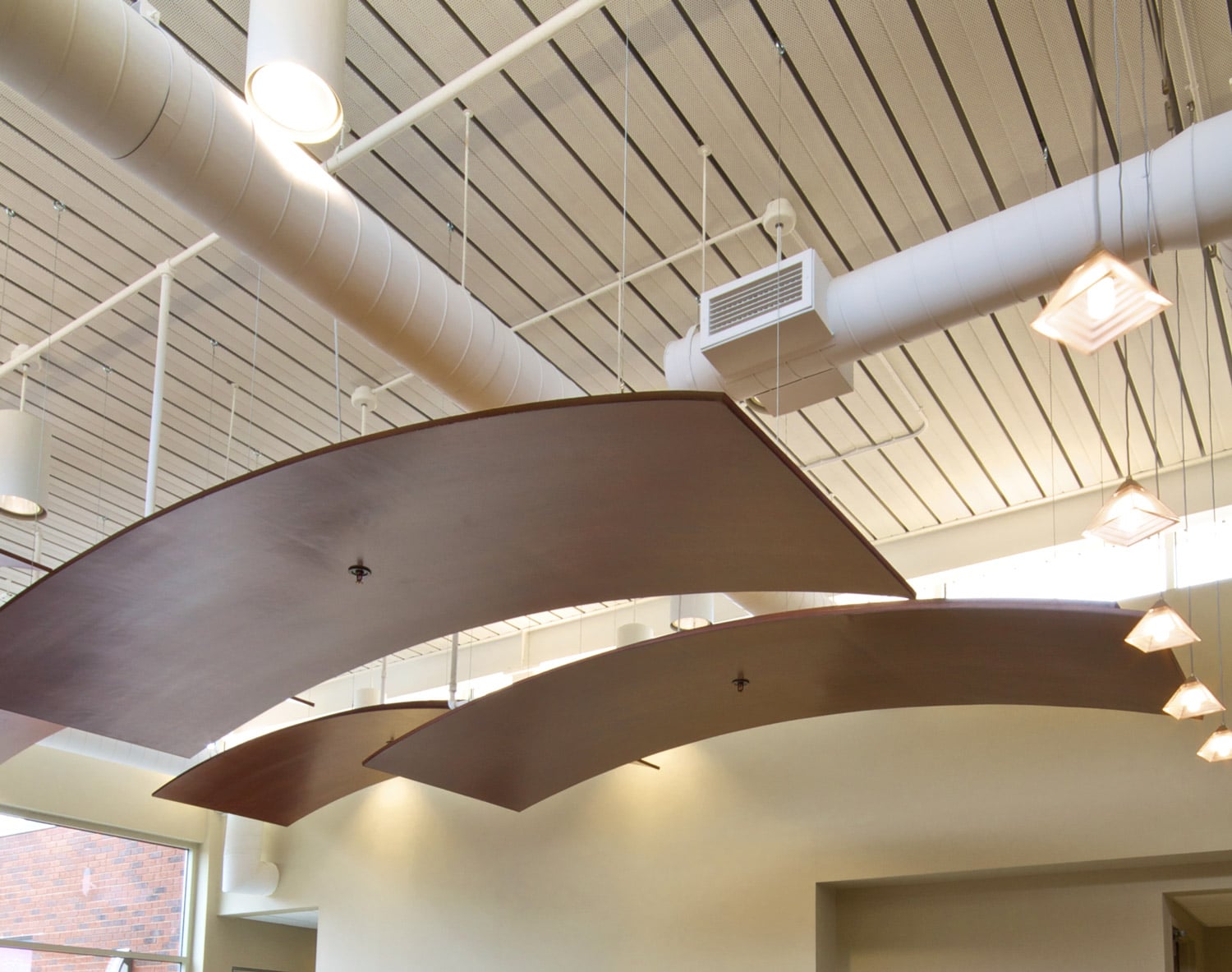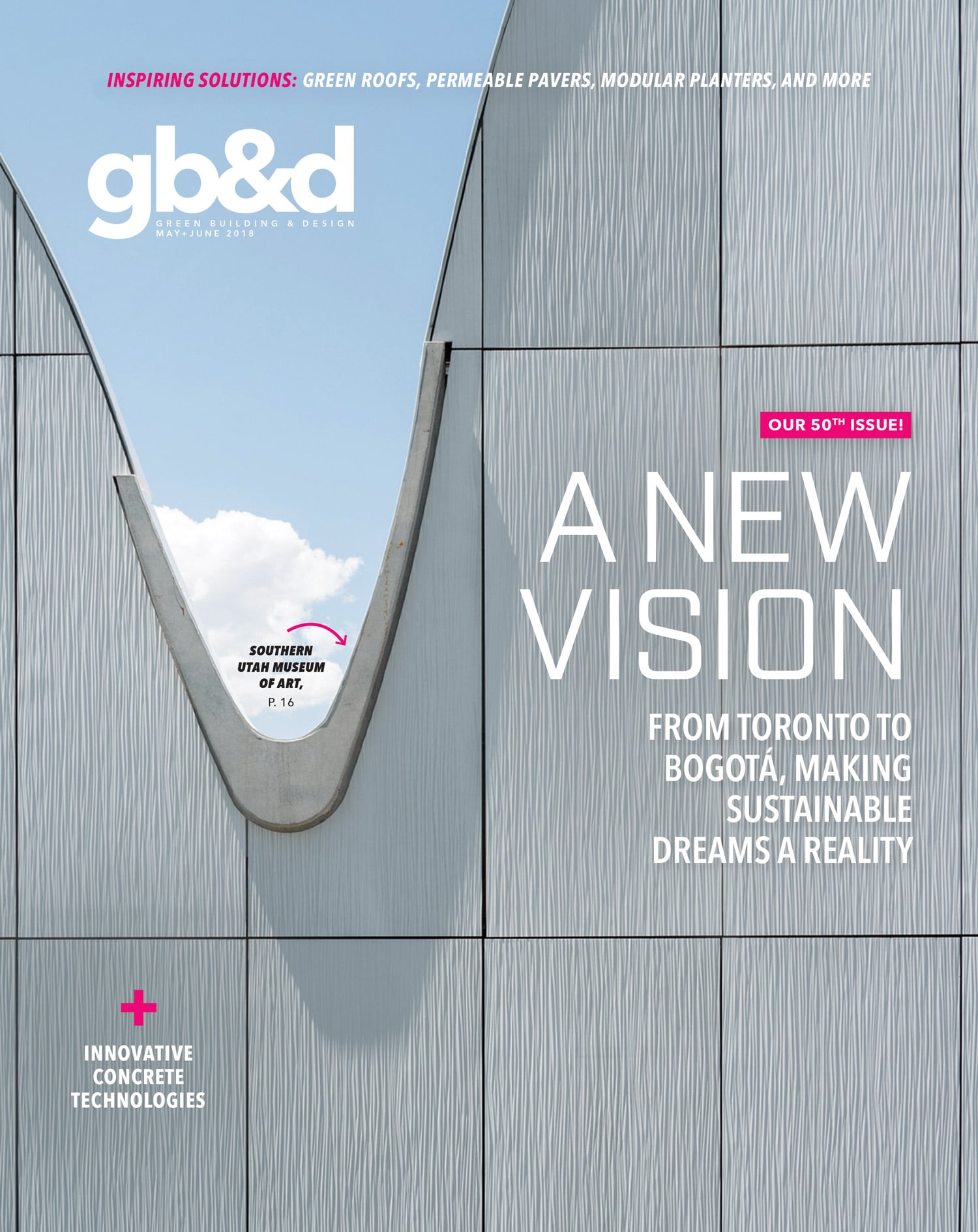
New Millennium’s Versa-Dek® line of dovetail steel decking opens the way to column-free spaces that are optimal for flexible-use classroom environments. [Photo: Courtesy of Architectural Photography]
Acoustical steel decks elevate efficiency and sustainability.
Schoolchildren don’t typically study the buildings in which they are educated, but there’s an architectural lesson when it comes to building design for learning environments. New Millennium Building Systems is leading the way, with a full range of steel joists, roof, and floor deck that support the movement to more flexible, adaptable, green, and affordable school design and construction.
“An emerging trend in school design is celebrating the structure and systems that make our buildings function,” says Alex Therien, market development manager for New Millennium. “We are moving away from concealing these networks to create learning environments as demonstrative to the students as any course.”
What Innovation Looks Like
San Francisco-based Project Frog has figured out how to address sustainability, acoustics, aesthetics, costs, and flexible teaching methodologies by applying New Millennium’s pre-finished Versa-Dek® to their own game-changing design and build methodologies. With a flat-packed set of building components (a “kit of parts”), a “frog” (named for “flexible response to ongoing growth”) is a building shell that lets its bones remain visible—not only to save money by avoiding lay-in ceiling tiles, but to provide for open, flexible, acoustically controlled, and sustainable learning spaces.
The dimensions of these kit-build structures differ significantly from pre-fabricated classrooms that must fit the restrictions of highway transport. The Project Frog buildings can be as large as 72-by-150 feet, accommodating much more versatile educational programs. They accommodate passive heating and cooling strategies, are PV-ready, and foster healthier learning with natural lighting and low-to-no VOC materials.
FROM OUR MAY+JUNE 2018 ISSUE
The preferred publication of leading green professionals.

The ceiling of a dovetail steel deck system can integrate hanging devices for the suspension of lighting and MEP integration. [Photo: Courtesy of New Millennium]
How Better Classrooms are Made
Cedar Grove Elementary School in San Jose, California, provides an excellent example of what an open learning classroom looks like. The district underwent a renovation and expansion of its existing campus to accommodate more students, with an educational emphasis on STEAM (Science, Technology, Engineering, Arts, and Math).
The classrooms are oversized—1,200 square feet each—allowing collaborative learning pods to break from the rows of desks typical of traditional classrooms. Factory-built, portable, modular classrooms are usually 840 square feet (14-by-60 feet), although it’s possible to conjoin them to double and triple widths (all with lower ceilings).
Portable/relocatable modular units are designed for a seven- to 12-year lifespan, according to David Smolker, product marketing director at Project Frog, while Frog’s permanent modular classrooms are expected to last much longer. “The tens of thousands of temporary modular units in use in California are meant to be just that— temporary—while districts look for sufficient funding,” Smolker says. “Frogs are less costly than traditional buildings and provide the air, light, and sound characteristics we know affect the quality of education.”

[Photo: Courtesy of New Millennium]
Next Generation Building Design
The future engineers and technologists at Cedar Grove Elementary now glance upward to see what the underside of a roof or upper floor looks like and how design and materials can have beneficial acoustical and daylight features. The school is constructed using two identical buildings, each two stories with 12 classrooms, covering 45,200 square feet. This includes hallways and a glazed interior lobby that doubles as a small assembly space.
Aedis Architects and Swenson & Associates, both in California, configured and augmented the overall design, and the structure was built in just 10 weeks—completed in time for the September 2017 school year opening day. Kit-to-build is not cookie-cutter, though. “Architects have a lot of flexibility designing with our kit-of-parts building platform,” says Dara Douraghi, studio director at Project Frog. “We see prefab as the way forward, as better technologies and manufacturing capacity move more and more of the construction activity offsite.”
Of course, design depends on engineering and the materials that can withstand wind, snow, sunshine, and rooms full of children. “Heavier snow loads, say, in Minnesota would require a higher gauge of steel,” Douraghi says. “New Millennium manufactures a host of components that include steel joists, bar joists, special profile joists, along with steel roof and floor decking so we can accommodate geographical variation.”
Project Frog school buildings, uplifted by New Millennium structural solutions, include dashboards for students to track solar energy from rooftop cells and water usage as part of the curriculum. But the first lesson may simply be in the transition from modular classrooms to frogs: It’s an exciting study of the power of material innovation and building design.
Why This Matters
The case for sustainable design using structural steel building systems is readily understood—steel is North America’s most recycled material. There is a consistent recycled supply chain and steel decking has post-consumer recycled content that can exceed 70%. But that’s only half the story.
Design teams can maximize efficiency by calling for long-span acoustical steel deck. By increasing deck span, fewer structural members are required. This leads to fewer materials, less fabrication, less installation time, and less waste. It’s a holistic approach to sustainable design.

